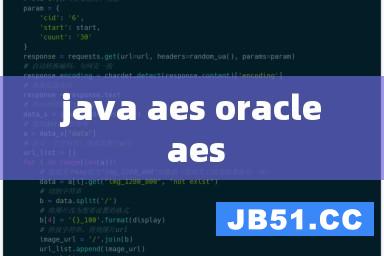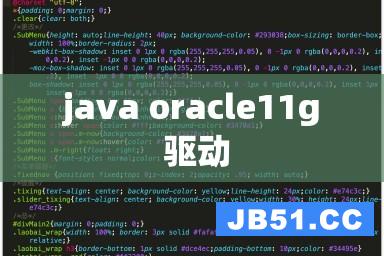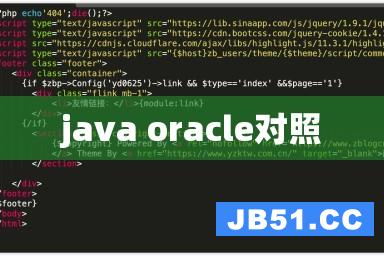root@gzwgnbu1 # more hot_database_backup.sh
#!/bin/sh
# $Header: hot_database_backup.sh,v 1.3 2010/08/04 17:56:02 $
#
#bcpyrght
#*********************************************************************
#* $VRTScprght: copyright 2014 Symantec Corporation,All Rights Reserved $ *
#*********************************************************************
#ecpyrght
#
# ---------------------------------------------------------------------------
# hot_database_backup.sh
# ---------------------------------------------------------------------------
# This script uses Recovery Manager to take a hot (inconsistent) database
# backup. A hot backup is inconsistent because portions of the database are
# being modified and written to the disk while the backup is progressing.
# You must run your database in ARCHIVELOG mode to make hot backups. It is
# assumed that this script will be executed by user root. In order for RMAN
# to work properly we switch user (su -) to the oracle dba account before
# execution. If this script runs under a user account that has Oracle dba
# privilege,it will be executed using this user's account.
# ---------------------------------------------------------------------------
# ---------------------------------------------------------------------------
# Determine the user which is executing this script.
# ---------------------------------------------------------------------------
CUSER=`id |cut -d"(" -f2 | cut -d ")" -f1`
# ---------------------------------------------------------------------------
# Put output in <this file name>.out. Change as desired.
# Note: output directory requires write permission.
# ---------------------------------------------------------------------------
RMAN_LOG_FILE=${0}.out
# ---------------------------------------------------------------------------
# You may want to delete the output file so that backup information does
# not accumulate. If not,delete the following lines.
# ---------------------------------------------------------------------------
if [ -f "$RMAN_LOG_FILE" ]
then
rm -f "$RMAN_LOG_FILE"
fi
# -----------------------------------------------------------------
# Initialize the log file.
# -----------------------------------------------------------------
echo >> $RMAN_LOG_FILE
chmod 666 $RMAN_LOG_FILE
# ---------------------------------------------------------------------------
# Log the start of this script.
# ---------------------------------------------------------------------------
echo Script $0 >> $RMAN_LOG_FILE
echo ==== started on `date` ==== >> $RMAN_LOG_FILE
echo >> $RMAN_LOG_FILE
# ---------------------------------------------------------------------------
# Replace /db/oracle/product/ora102,below,with the Oracle home path.
# ---------------------------------------------------------------------------
ORACLE_HOME=/db/oracle/product/ora102 #oracle目录
export ORACLE_HOME
# ---------------------------------------------------------------------------
# Replace ora102,with the Oracle SID of the target database.
# ---------------------------------------------------------------------------
ORACLE_SID=ora102 #备份的数据库
export ORACLE_SID
# ---------------------------------------------------------------------------
# Replace ora102,with the Oracle DBA user id (account).
# ---------------------------------------------------------------------------
ORACLE_USER=ora102 备份使用的系统用户
# ---------------------------------------------------------------------------
# Set the target connect string.
# Replace "sys/manager",with the target connect string.
# ---------------------------------------------------------------------------
TARGET_CONNECT_STR=sys/manager ### sys/manager 改为 / ###
# ---------------------------------------------------------------------------
# Set the Oracle Recovery Manager name.
# ---------------------------------------------------------------------------
RMAN=$ORACLE_HOME/bin/rman #NBU中rman命令的位置
# ---------------------------------------------------------------------------
# Print out the value of the variables set by this script.
# ---------------------------------------------------------------------------
echo >> $RMAN_LOG_FILE
echo "RMAN: $RMAN" >> $RMAN_LOG_FILE
echo "ORACLE_SID: $ORACLE_SID" >> $RMAN_LOG_FILE
echo "ORACLE_USER: $ORACLE_USER" >> $RMAN_LOG_FILE
echo "ORACLE_HOME: $ORACLE_HOME" >> $RMAN_LOG_FILE
# ---------------------------------------------------------------------------
# Print out the value of the variables set by bphdb.
# ---------------------------------------------------------------------------
echo >> $RMAN_LOG_FILE
echo "NB_ORA_FULL: $NB_ORA_FULL" >> $RMAN_LOG_FILE
echo "NB_ORA_INCR: $NB_ORA_INCR" >> $RMAN_LOG_FILE
echo "NB_ORA_CINC: $NB_ORA_CINC" >> $RMAN_LOG_FILE
echo "NB_ORA_SERV: $NB_ORA_SERV" >> $RMAN_LOG_FILE
echo "NB_ORA_POLICY: $NB_ORA_POLICY" >> $RMAN_LOG_FILE
# ---------------------------------------------------------------------------
# NOTE: This script assumes that the database is properly opened. If desired,
# this would be the place to verify that.
# ---------------------------------------------------------------------------
echo >> $RMAN_LOG_FILE
# ---------------------------------------------------------------------------
# If this script is executed from a NetBackup schedule,NetBackup
# sets an NB_ORA environment variable based on the schedule type.
# The NB_ORA variable is then used to dynamically set BACKUP_TYPE
# For example,when:
# schedule type is BACKUP_TYPE is
# ---------------- --------------
# Automatic Full INCREMENTAL LEVEL=0
# Automatic Differential Incremental INCREMENTAL LEVEL=1
# Automatic Cumulative Incremental INCREMENTAL LEVEL=1 CUMULATIVE
#
# For user initiated backups,BACKUP_TYPE defaults to incremental
# level 0 (full). To change the default for a user initiated
# backup to incremental or incremental cumulative,uncomment
# one of the following two lines.
# BACKUP_TYPE="INCREMENTAL LEVEL=1"
# BACKUP_TYPE="INCREMENTAL LEVEL=1 CUMULATIVE"
#
# Note that we use incremental level 0 to specify full backups.
# That is because,although they are identical in content,only
# the incremental level 0 backup can have incremental backups of
# level > 0 applied to it.
# ---------------------------------------------------------------------------
if [ "$NB_ORA_FULL" = "1" ]
then
echo "Full backup requested" >> $RMAN_LOG_FILE
BACKUP_TYPE="INCREMENTAL LEVEL=0"
elif [ "$NB_ORA_INCR" = "1" ]
then
echo "Differential incremental backup requested" >> $RMAN_LOG_FILE
BACKUP_TYPE="INCREMENTAL LEVEL=1"
elif [ "$NB_ORA_CINC" = "1" ]
then
echo "Cumulative incremental backup requested" >> $RMAN_LOG_FILE
BACKUP_TYPE="INCREMENTAL LEVEL=1 CUMULATIVE"
elif [ "$BACKUP_TYPE" = "" ]
then
echo "Default - Full backup requested" >> $RMAN_LOG_FILE
BACKUP_TYPE="INCREMENTAL LEVEL=0"
fi
# ---------------------------------------------------------------------------
# Call Recovery Manager to initiate the backup. This example does not use a
# Recovery Catalog. If you choose to use one,replace the option 'nocatalog'
# from the rman command line below with the
# 'catalog <userid>/<passwd>@<net service name>' statement.
#
# Note: Any environment variables needed at run time by RMAN
# must be set and exported within the switch user (su) command.
# ---------------------------------------------------------------------------
# Backs up the whole database. This backup is part of the incremental
# strategy (this means it can have incremental backups of levels > 0
# applied to it).
#
# We do not need to explicitly request the control file to be included
# in this backup,as it is automatically included each time file 1 of
# the system tablespace is backed up (the inference: as it is a whole
# database backup,file 1 of the system tablespace will be backed up,
# hence the controlfile will also be included automatically).
#
# Typically,a level 0 backup would be done at least once a week.
#
# The scenario assumes:
# o you are backing your database up to two tape drives
# o you want each backup set to include a maximum of 5 files
# o you wish to include offline datafiles,and read-only tablespaces,
# in the backup
# o you want the backup to continue if any files are inaccessible.
# o you are not using a Recovery Catalog
# o you are explicitly backing up the control file. Since you are
# specifying nocatalog,the controlfile backup that occurs
# automatically as the result of backing up the system file is
# not sufficient; it will not contain records for the backup that
# is currently in progress.
# o you want to archive the current log,back up all the
# archive logs using two channels,putting a maximum of 20 logs
# in a backup set,and deleting them once the backup is complete.
#
# Note that the format string is constructed to guarantee uniqueness and
# to enhance NetBackup for Oracle backup and restore performance.
#
#
# NOTE WHEN USING NET SERVICE NAME: When connecting to a database
# using a net service name,you must use a send command or a parms operand to
# specify environment variables. In other words,when accessing a database
# through a listener,the environment variables set at the system level are not
# visible when RMAN is running. For more information on the environment
# variables,please refer to the NetBackup for Oracle Admin. Guide.
#
# ---------------------------------------------------------------------------
CMD_STR="
ORACLE_HOME=$ORACLE_HOME
export ORACLE_HOME
ORACLE_SID=$ORACLE_SID
export ORACLE_SID
$RMAN target $TARGET_CONNECT_STR nocatalog msglog $RMAN_LOG_FILE append << EOF
RUN { //以下为database备份
ALLOCATE CHANNEL ch00 TYPE 'SBT_TAPE'; #为磁带备份分配通道
ALLOCATE CHANNEL ch01 TYPE 'SBT_TAPE';
BACKUP
$BACKUP_TYPE
SKIP INACCESSIBLE #跳过不可存取文件
TAG hot_db_bk_level0 #设置备份标记,仅仅是一个标识名称,在以后恢复中可以根据名称来恢复
FILESPERSET 5 #最多包含五个文件
# recommended format
DATABASE; #标识定义的是整个数据库
sql 'alter system archive log current';
RELEASE CHANNEL ch00; #释放通道
RELEASE CHANNEL ch01;
# backup all archive logs //以下为archive log备份
ALLOCATE CHANNEL ch00 TYPE 'SBT_TAPE'; #分配通道
ALLOCATE CHANNEL ch01 TYPE 'SBT_TAPE';
#ALLOCATE CHANNEL ch00 TYPE 'SBT_TAPE' connect='sys/sysadmin@gtwdb01 SEND 'NB_ORA_POLICY=yun-gtwdb-1-oralog';
#ALLOCATE CHANNEL ch01 TYPE 'SBT_TAPE' connect='sys/sysadmin@gtwdb02 SEND 'NB_ORA_POLICY=yun-gtwdb-2-oralog'; //针对RAC的archive log备份
//(archivelog在非共享存储上)
BACKUP
filesperset 20 #最多包含20个文件
ARCHIVELOG ALL DELETE INPUT; #备份的是archive log,备份之后删除所有归档日志
RELEASE CHANNEL ch00; #释放通道
RELEASE CHANNEL ch01;
#
# Note: During the process of backing up the database,RMAN also backs up the
# control file. This version of the control file does not contain the
# information about the current backup because "nocatalog" has been specified.
# To include the information about the current backup,the control file should
# be backed up as the last step of the RMAN section. This step would not be
# necessary if we were using a recovery catalog or auto control file backups.
#
ALLOCATE CHANNEL ch00 TYPE 'SBT_TAPE'; #分配通道
BACKUP
# recommended format
FORMAT 'cntrl_%s_%p_%t' #备份名称格式
CURRENT CONTROLFILE; #备份控制文件
RELEASE CHANNEL ch00; 释放通道
}
EOF
"
# Initiate the command string
if [ "$CUSER" = "root" ]
then
su - $ORACLE_USER -c "$CMD_STR" >> $RMAN_LOG_FILE
RSTAT=$?
else
/usr/bin/sh -c "$CMD_STR" >> $RMAN_LOG_FILE
RSTAT=$?
fi
# ---------------------------------------------------------------------------
# Log the completion of this script.
# ---------------------------------------------------------------------------
if [ "$RSTAT" = "0" ]
then
LOGMSG="ended successfully"
else
LOGMSG="ended in error"
fi
echo >> $RMAN_LOG_FILE
echo Script $0 >> $RMAN_LOG_FILE
echo ==== $LOGMSG on `date` ==== >> $RMAN_LOG_FILE
echo >> $RMAN_LOG_FILE





